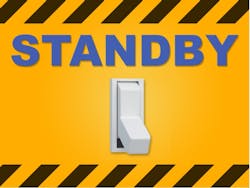California Considers Lifting Microgrid Standby Charges
The California Public Utilities Commission (CPUC) will consider lifting or reducing standby charges for microgrids in the third phase of its effort to help commercialize microgrids.
Standby charges — rates utilities use to cover their costs for self-generation customers — are viewed as a potential financial barrier to microgrids.
Initial comments on the issue of standby charges are due March 3, according to a scoping memo released Feb. 9.
The initiative grew out of a bill (S.B. 1339) that requires the commission to develop standards, protocols, guidelines, rates and tariffs that support microgrid development while avoiding shifting costs between ratepayers.
The commission in June finished the proceeding’s first track by ordering changes that could take effect immediately, such as speeding up the interconnection process for microgrids.
The second phase wrapped up last month with the commission approving microgrid tariffs, rules and incentives.
During the second track, many parties “fervently” urged the commisson to exempt microgrids from standby charges, which cover an investor-owned utility’s costs of making sure it has the ability to supply power if a microgrid’s generation doesn’t work as planned, PUC Commissioner Genevieve Shiroma said in the scoping memo, noting that the microgrid bill bars cost shifting from the creation of microgrids.
A utility, for example, must be prepared to provide electric service if a microgrid doesn’t work as planned by investing in transmission capacity, distribution capacity, resource adequacy and energy.
“Standby charges ensure customers pay for the critical transmission and distribution infrastructure for the investor-owned utility to provide safe and reliable service,” Shiroma said.
PUC seeks views on standby charges for microgrids
The question the commission aims to tackle in the third track is whether Pacific Gas & Electric, Southern California Edison and San Diego Gas & Electric should be required to waive standby charges for a customer operating a microgrid, regardless of fuel sources, as long as waiving the charge will enable the microgrid to benefit other customers in an amount at least equal to the standby charges.
As part of its review, the commission wants to know if it should limit the eligibility of microgrid resources for the standby charge waiver to ensure compliance with California’s air pollution and greenhouse gas emissions reduction requirements.
Shiroma asked for responses to a series of questions drafted by commission staff about standby charges and microgrids.
The CPUC, for example, wants to know what are conditions that should be met to qualify for a standby charge waiver or reduction and which charges should be reduced or waived.
The commission asked microgrid developers to give examples of projects that failed to move forward where reduced standby charges may have made them unviable.
Separately, the CPUC intends to launch a fourth track in the proceeding to cover multi-property tariffs and alternatives; value of resiliency; interconnection issues; and single property tariffs.
Two good reasons to register today for Microgrid Knowledge’s 2021 virtual conference. 1. Over 10% of available spaces were snapped up in the first 24 hours registration was open. 2. Advanced registration is free.
Standby charges pose barriers
Standby changes are primarily an economic issue for microgrid projects, but they highlight how interconnected these regulatory policies are, according to Cameron Brooks, president of E9 Insight, a regulatory advisory firm that tracks public utilities commissions.
The charges are an example of how policies that made some sense in the past are creating barriers to moving into the future, Brooks said.
Often, standby charges are designed with the assumption that a utility must have resources ready to fully replace any customer-sited resources, which can add significant costs for the customer without accurately reflecting the actual risk to the utility, according to Brooks.
“Going forward, the challenge for microgrids will be to design tariffs and charges (like standby charges) that are not based on outdated assumptions, but that accurately reflect how microgrids can be integrated into planning for the distribution system,” Brooks said.
Track the news as California considers doing away with standby charges for microgrids. Subscribe to the free Microgrid Knowledge Newsletter.
